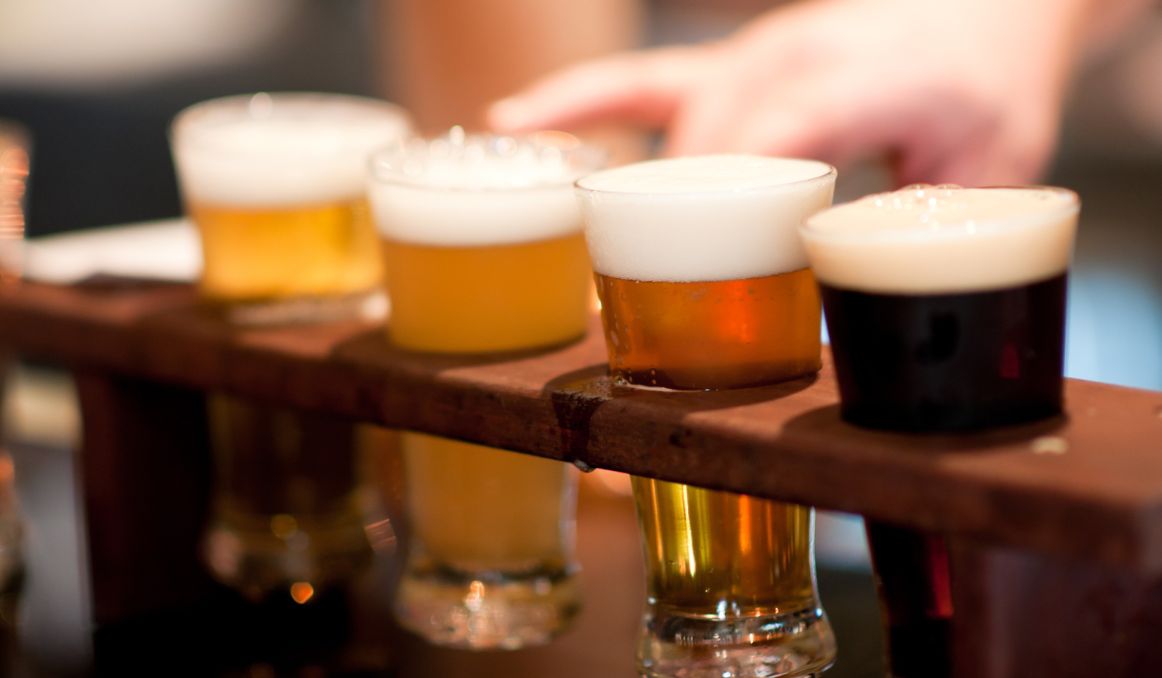Beer Yeast Strains Chart: The Flavor Profiles
It is a great misunderstanding in the brewing world that flavors in beer are a result exclusively of the various ingredients we add to beer.
Hops, for example, get a great deal of attention.
And we speak of course of oatmeal stouts versus wheat beers, barley as compared to other grains.
But the reality very few brewers talk about, and even fewer beer drinkers talk about, is that most of the wondrous flavors we get in beer comes from yeast.
Yeast in Beer

Beer is relatively new in terms of fermented beverages.
Sure, it is thousands of years old, but when we compare that to the fact that wine is hundreds of thousands of years old, beer is a baby.
And no wonder.
It takes very little effort to make even a great wine.
You simply crush grapes and leave them out to allow nature to take its course.
Yeast, a single celled organism that belongs to the fungus family, the oldest life form on earth, hovers in virtually every environment.
And its job is simple – to find sugars and convert them to alcohol and carbon dioxide.
The same story goes for bread.
Simply knead dough and leave it out for a day or two, and you will return to find your bread has risen.
It is not a huge leap from there to begin playing with different grapes varieties, various grains in bread, and always trusting that yeast will float in to do its job.
And for several millennia, vintners and bakers relied largely on native yeasts to do just that.
Yeast was always wild, never domesticated.
When beer came onto the scene, brewers learned to malt, or roast, their grains first in order to convert those starches to sugars.
They learned to grind the grain and boil it in water, then allowing for steeping process, not unlike the brewing of tea, to fully release those sugars into the water.
It was not long then that drinkers began to note that the beverage was too sweet.
After all, that malting created very sweet grains to make the resulting wort.
So, brewers introduced a mix of herbs to add bitterness.
First called “gruit” the herb mixture included everything from rosemary and yarrow to an herb called bog myrtle.
Finally, around the 1500s, brewers began to agree upon a single plant to cut the sweetness of ale – hops.
Yeast and beer flavor
Still, for all of that time, most beers, then only ales, were reliant on a single primary yeast – Saccharomyces cerevisiae, which has hundreds of sub strains throughout the world.
S. cerevisiae is ideal for brewing because it will ferment at typical “room temperature,” anywhere from the high 50s in Fahrenheit up to the low 80s.
And across the world, various different beers were created as a result of these hundreds of different sub strains.
Yeast contributes notes of flowers, of fruit, of herbs, of peppers, of cloves and other spices, and yes, even of bread. And there exists a whole range in each of those categories just in yeast alone.
Add to the flavors and aromas of various native yeasts the different grains or fruits that may be added to a beer and you have virtually infinite options.
Then, around the same time hops were introduced, a group of monks in the Bavarian mountains decided to place their barrels of beer in caves to ferment.
Lo and behold an entirely new strain of yeast was discovered – Saccharomyces pastorianus – lager yeast.
S. pastorianus ferments on the bottom of the vessel, as opposed to the top fermentation of S. cerevisae, and it does so at much lower temperatures, from low 40s to mid 50s in Fahrenheit.
And of course, S. pastorianus has hundreds of its own sub strains.
So now we have two beer types – ales and lagers – with a plethora of options within each of those two parent families.
Today, many yeasts have been domesticated; that is to say harvested from the wild and then grown in labs for mass production and shipping around the world.
Which is not necessarily a bad thing.
It allows brewers to experiment with yeast they may have never encountered otherwise.
It also allows us to accurately chart each strain of beer yeast available on the market today.

Beer Yeast Strains Chart
The following chart (or rather table) is taken from Beer Craftr, as they’ve put together one of the most extensive list out there. For a full understanding of each yeast strain and a complete list of those yeasts, check out their highly descriptive page.
|
American Ale American ale yeast is the most common yeast on the market. A great starting point for new brewers looking to experiment with various ingredients and approaches, it is reliable and durable. |
Belgian Ale
Fruitier with hints of clove, these yeasts are obviously native to Belgium and will produce beers with higher alcohol content. |
| British Ale
British ale yeasts create beers that are diverse and crisp, offering a tart finish with woodsy notes. |
Belgian Lambic/Sour Ale
You have to be a fan of sour beers to love these yeasts, but so many people have acquired a taste for them that it is certainly worth a try. |
| Barley wine/Imperial Stout
Barleywine yeast comes with a higher ABV, in the 8 to 12% range, and offers a malty, roasty flavor. |
India Pale Ales
IPA yeasts work well with the (usually) extra hoppy flavor in this beer. Originally designed to weather the long journey from the old world to the new, this yeast is up for a tough job. |
| Brown Ale
Fairly new to the market, brown ale yeasts give you a lot to work with, anywhere from nuttiness to rich malty flavors. |
Kolsch and Altbier
Kolsch and Altbier yeasts yield a crisp, clean, smooth beer on top of a malty, cereal texture. |
| Stouts and Porters
If you love the thick, rich Guiness, you’ll love one of these stout and porter yeasts. They offer chocolaty and coffee reminiscent flavors and aromas. |
Wheat Beer
And of course there are the yeasts that work so well with a nice crisp, refreshing, slightly fruity wheat beer. You’ll get hints of banana and clove in these yeast strains. |
Remember, it is up to you, the brewers, to explore and experiment from among all of your options, and never be afraid to simply open up your brewing vessel to whatever wild strains may live locally, hungering for the sugars in your beer.
Cheers!
Yeast activity monitoring is essential for optimizing the process of yeast harvesting and repitching! If you’re interested in finding out how you can use our technology to control fermentation and monitor your yeast, save work hours and improve the cost-efficiency of your business, drop us a line at [email protected] or check out the product pages (for beer or wine):
- Oculyze BB 2.0 (Better Brewing) Yeast Cell Counter App + Hardware
- Oculyze FW (Fermentation Wine) Yeast Cell Counter App + Hardware
Also, you can now get access to a fully functional demo account to test our Web App. Completely free of charge and with no commitment to purchase.
Sources:


